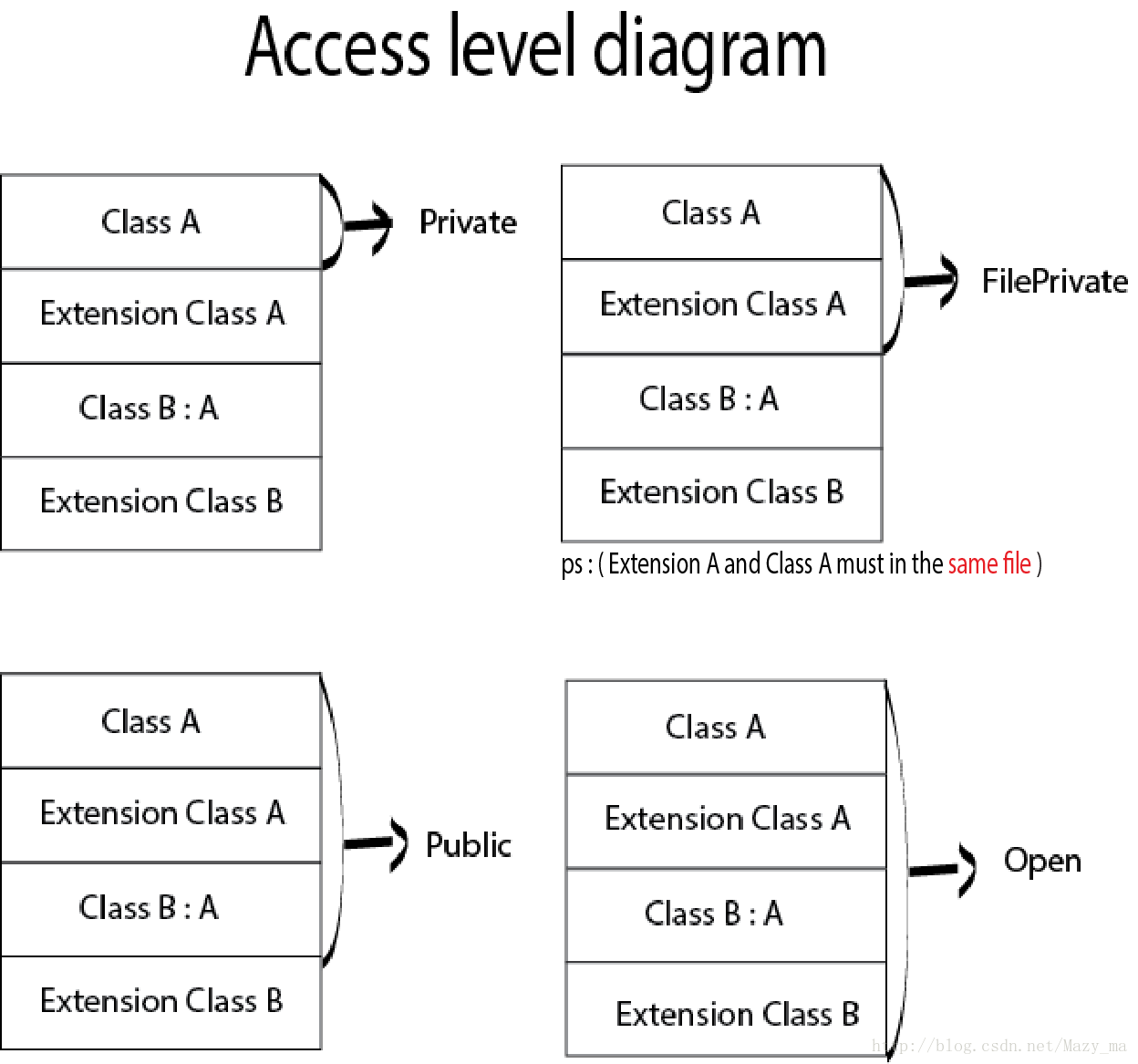static和class的使用
static 使用
在非class的类型(包括enum和struct)中,一般使用static来描述类型作用域。在这个类型中,我们可以在类型范围中声明并使用存储属性,计算属性和方法。

1 //other 2 struct Point { 3 let x: Double 4 let y: Double 5 // 存储属性 6 static let zero = Point(x: 0, y: 0) 7 // 计算属性 8 static var ones: [Point] { 9 return [Point(x: 1, y: 1), 10 Point(x: -1, y: 1), 11 Point(x: 1, y: -1), 12 Point(x: -1, y: -1)] 13 } 14 // 类方法 15 static func add(p1: Point, p2: Point) -> Point { 16 return Point(x: p1.x + p2.x, y: p1.y + p2.y) 17 } 18 } ``` 19 > 注意: class修饰的类中不能使用class来存储属性的
class 使用
1 // other 2 class MyClass { 3 class var bar: Bar? 4 }
但是在使用protocol时,要注意会报一种错误,如:"class variables not yet supported"
//other 有一个比较特殊的是protocol,在Swift中class、struct和enum都是可以实现protocol的,那么如果我们想在protocol里定义一个类型域上的方法或者计算属性的话,应该用哪个关键字呢?答案是使用class进行定义,但是在实现时还是按照上面的规则:在class里使用class关键字,而在struct或enum中仍然使用static——虽然在protocol中定义时使用的是class.

1 //other 2 protocol MyProtocol { 3 static func foo() -> String 4 } 5 struct MyStruct: MyProtocol { 6 static func foo() -> String { 7 return "MyStruct" 8 } 9 } 10 enum MyEnum: MyProtocol { 11 static func foo() -> String { 12 return "MyEnum" 13 } 14 } 15 class MyClass: MyProtocol { 16 class func foo() -> String { 17 return "MyClass" 18 } 19 }
Private、FilePrivate、Public、open
四大属性的使用范围图:

private 修饰符
- 只允许在当前类中调用,不包括 Extension
- private 现在变为了真正的私有访问控制
- 用 private 修饰的方法不可以被代码域之外的地方访问
fileprivate 修饰符
- fileprivate 其实就是过去的 private。
- 其修饰的属性或者方法只能在当前的 Swift 源文件里可以访问。
- 即在同一个文件中,所有的 fileprivate 方法属性都是可以访问到的。
1 class A { 2 fileprivate func test(){ 3 print("this is fileprivate func!") 4 } 5 } 6 7 class B:A { 8 func show(){ 9 test() 10 } 11 }
public 修饰符
- 修饰的属性或者方法可以在其他作用域被访问
- 但不能在重载 override 中被访问
- 也不能在继承方法中的 Extension 中被访问
open 修饰符
open 其实就是过去的 public,过去 public 有两个作用:
- 修饰的属性或者方法可以在其他作用域被访问
- 修饰的属性或者方法可以在其他作用域被继承或重载 override
